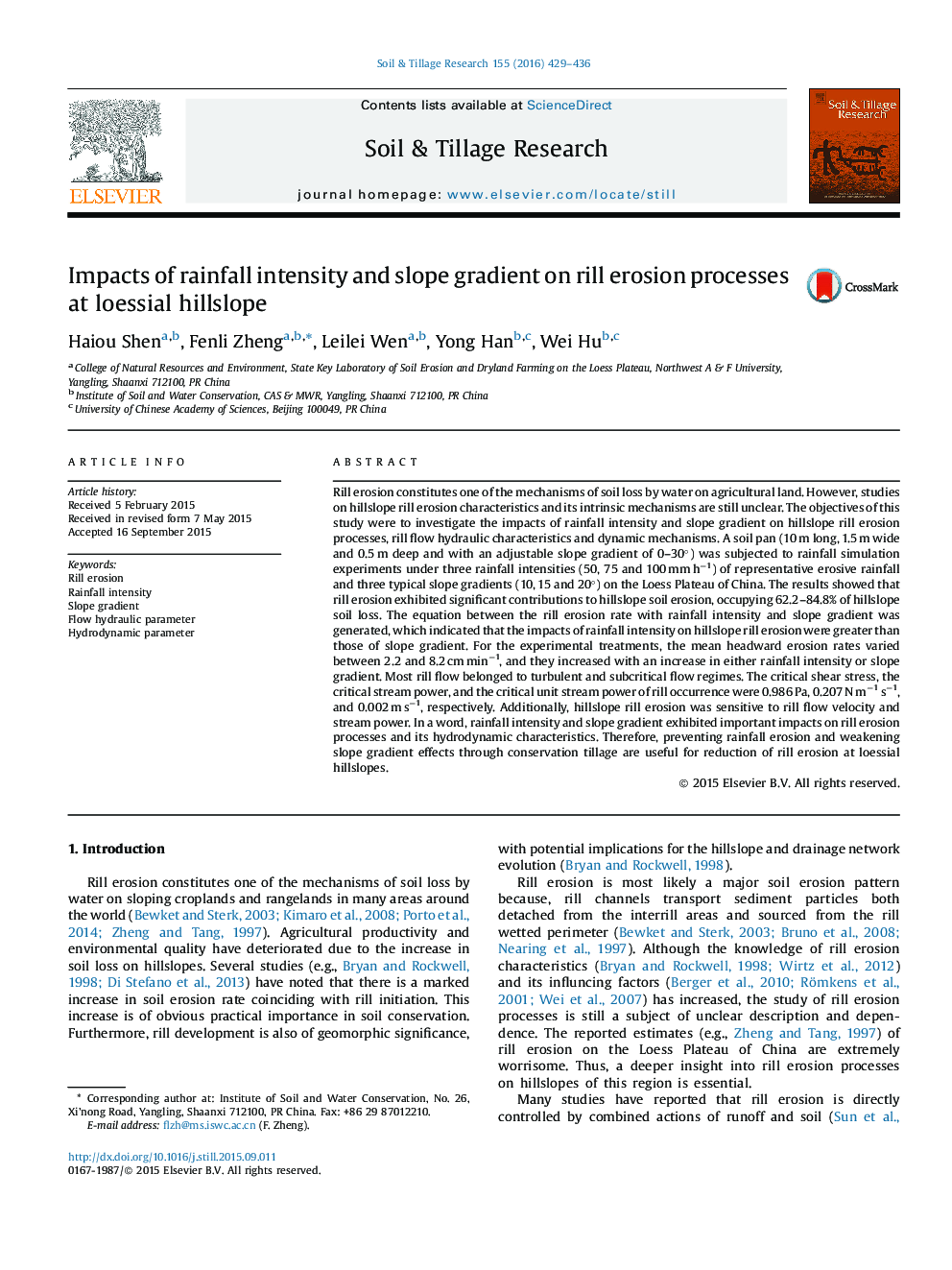| Article ID | Journal | Published Year | Pages | File Type |
|---|---|---|---|---|
| 305499 | Soil and Tillage Research | 2016 | 8 Pages |
•Impacts of rainfall intensity and slope gradient on rill erosion were investigated.•Rill erosion rate and critical runoff rate per unit width equations were generated.•Mean headward erosion rates varied between 2.2 and 8.2 cm min−1.•Hillslope rill erosion was sensitive to rill flow velocity and stream power.
Rill erosion constitutes one of the mechanisms of soil loss by water on agricultural land. However, studies on hillslope rill erosion characteristics and its intrinsic mechanisms are still unclear. The objectives of this study were to investigate the impacts of rainfall intensity and slope gradient on hillslope rill erosion processes, rill flow hydraulic characteristics and dynamic mechanisms. A soil pan (10 m long, 1.5 m wide and 0.5 m deep and with an adjustable slope gradient of 0–30°) was subjected to rainfall simulation experiments under three rainfall intensities (50, 75 and 100 mm h−1) of representative erosive rainfall and three typical slope gradients (10, 15 and 20°) on the Loess Plateau of China. The results showed that rill erosion exhibited significant contributions to hillslope soil erosion, occupying 62.2–84.8% of hillslope soil loss. The equation between the rill erosion rate with rainfall intensity and slope gradient was generated, which indicated that the impacts of rainfall intensity on hillslope rill erosion were greater than those of slope gradient. For the experimental treatments, the mean headward erosion rates varied between 2.2 and 8.2 cm min−1, and they increased with an increase in either rainfall intensity or slope gradient. Most rill flow belonged to turbulent and subcritical flow regimes. The critical shear stress, the critical stream power, and the critical unit stream power of rill occurrence were 0.986 Pa, 0.207 N m−1 s−1, and 0.002 m s−1, respectively. Additionally, hillslope rill erosion was sensitive to rill flow velocity and stream power. In a word, rainfall intensity and slope gradient exhibited important impacts on rill erosion processes and its hydrodynamic characteristics. Therefore, preventing rainfall erosion and weakening slope gradient effects through conservation tillage are useful for reduction of rill erosion at loessial hillslopes.
